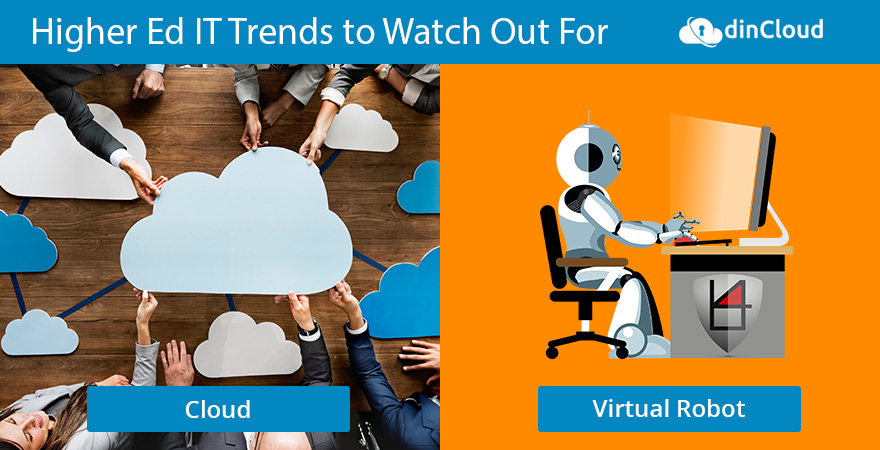According to a recent report from the Federal Reserve Bank of New York, 44 million borrowers are struggling with paying back an astounding amount of $1.3 trillion in student debt. As a result, there’s an increasing trend in the average dropout rate in public higher education institutions, as most students cannot justify the costly long term loans for a degree.
Higher Ed Institutions are realizing these trends and have begun looking for ways to cut their expenses, while running their operation efficiently and without compromising the quality of education. As today’s economy is going through a digital transformation, higher education institutions need to review their current IT strategy and see if they’re leveraging the latest tech trends that can help them achieve their goals.

Take a look at what Deloitte’s digital education survey and a report from DJS research have to say:
- Deloitte’s digital education survey report shows 81% of non-tenured teachers believe that digital transformation in education technology (Edtech) can have a positive impact on learning and nearly half of them feel that their institution is “behind the curve” when it comes to Edtech.
- Recent study conducted by DJS research reports that by and large, the student’s perspective is that their universities’ digital strategy is so poor that it has started to negatively impact their overall impression of the institution.
Cloud for Higher Education:
With the fluctuating demand, annual variation in enrollment and the increasing competition in the higher Education industry, IT departments can no longer afford to spend the majority of their time and budget on maintenance of on prem infrastructure.
Maintaining the IT infrastructure and keeping it up to date with the latest technology can be a tedious task. By moving the infrastructure to the cloud, higher ed institutions don’t have to worry about the upgrades and maintenance and can focus their energies on their core tasks of teaching, learning and research. One such way educational institutions can accomplish this is by utilizing hosted workspaces.
By leveraging cloud technologies, higher Ed institutions can make use of a more elastic consumption model. Hosted Workspaces can be spun up or down according to the need. As the education budgets continue to tighten, Cloud, with it’s pay-as-you-go consumption model is just the thing higher education industry needs. On top of the versatility that Hosted Workspaces provide, institutions can also find additional cost savings by extending the life of aging hardware. When an institution utilizes this technology, all of the compute and processing power is also hosted through the workspace provider. Old processors and systems essentially become a dumb terminal and the only require an internet connection to work.

Virtual Robots for Higher Education
Newer trending technologies like the Virtual robots, hybrids of business process management (BPM) and Robotic Process Automation (RPA) have tremendous potential to help higher ed institutions become more efficient and productive.
By leveraging these virtual robots, higher education institutions can make sure their systems are:
- Performing as expected
- Ensuring smooth management and automation of admissions
- Streamlining their resources
- Simplifying accounts payable
- Ensuring compliance initiatives
- Quality assurance with consistency and precision
At dinCloud, we help Higher Education Institutions leverage the latest tech trends to stay competitive and efficient without compromising the quality of education. Stay tuned for more insights on these latest IT Technology Trends in Higher Education.
In the meantime do check out these additional recommended articles:


